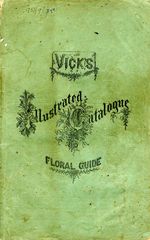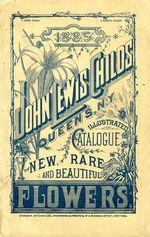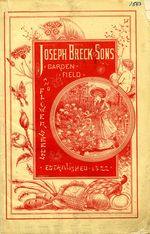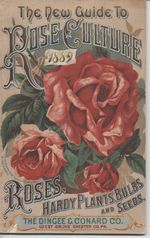“Our postal laws admit plants, seeds and bulbs, to be sent at the cost of two cents for four ounces, provided the package does not exceed four pounds in weight. This arrangement has been the means of sending seeds and plants into regions where they would not for many years have been procurable with other means of conveyance, and the projector of the idea deserves the gratitude of the nation for it”.
Peter Henderson, Practical Floriculture, 1869, p.188
In America, many more seed and nursery companies came into being during the second half of the nineteenth century, especially after the Civil War. Mail-order became much more common due to improved transportation networks and postal reforms in the 1860s that made it cheaper to ship seeds and plant material, as well as catalogues.1 Mail-order companies increased the size and number of catalogues they produced, and most catalogues were shipped to customers free upon request. As more business was done by mail, catalogues contained more detailed ordering and shipping instructions, with frequent pleas for clear handwriting and admonishments not to omit such essentials as customers’ names and addresses! An example from the John Lewis Childs catalogue of 1885 is scanned here. The cover of James J. H. Gregory’s catalogue asked customers to send him addresses of potentially interested friends.
With the growth of cities and towns throughout the country, seed and nursery companies faced a huge potential market, but also increased competition. As a result, many catalogues tried to distinguish themselves from their competitors by promoting more novelties and giving vegetable and flower varieties names containing superlatives such as “Mammoth”, “Giant” or “Perfection”. Catalogue covers became more elaborate, and companies also devoted more space to illustrations, descriptions, testimonials, contests, special offers, and awards won at horticultural fairs or exhibitions. Novelties were often described in special sections of catalogues that were sometimes marked by different colored pages. Dingee & Conard’s 1889 catalogue contained an insert on pink paper listing their discounted collections of popular varieties.
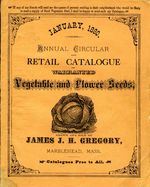
Annual Circular and Retail Catalogue of Warranted Vegetable and Flower Seeds. 1880. (Click for more images)
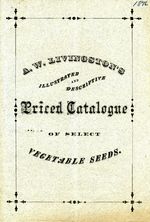
A. W. Livingston's Illustrated and Descriptive Priced Catalogue of Select Vegetable Seeds. 1876. (Click for more images)
Catalogues catered both to home gardeners, and aspiring market growers. As truck farming increased in scale, there was a great demand for reliable commercial varieties, and some market gardeners began producing seeds for this purpose. Improvements in food preservation led to the need for varieties suitable for canning and pickling; in 1875, the refrigerated railway car was brought into use, leading to an even larger-scale commercial vegetable and fruit trade. The scans from catalogues by A. W. Livingston and James J.H. Gregory describe some of the tomato and squash varieties they introduced for both amateur and market gardeners. Thanks to the efforts of heirloom seed savers, many of these varieties, which were widely sold in the late nineteenth century, are still available today.
Notes
- Cheryl Lyon-Jenness, “Petunias by Post: The Post Office and America’s 19th century Horticultural Boom” (Winton M. Blount Symposium on Postal History, Nov. 4, 2006) http://www.postalmuseum.si.edu/blount/papers/Lyon-Jenness.PDF

